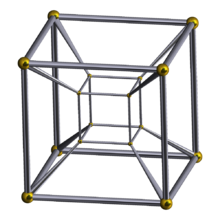数学对象
数学对象(Mathematical object)是数学中的抽象概念。用数学的普通语言来说,对象是任何可以或已经用演绎推理和数学证明正式定义的对象。一般地,一个数学对象可以是一个能代入变数的值,从而可以用于公式里。 经常遇到的数学对象包括数、集合、函数、表示式、几何形状、其他数学对象的变换和空间。数学对象可以非常复杂。比如说,定理、证明甚至理论在证明论中被视为数学对象。
数学对象的存在是数学哲学家进行大量研究和讨论的对象。[1]
按分支分类的数学对象列表
参见
- 抽象对象
- 数学结构
参考文献
- Azzouni, J., 1994. Metaphysical Myths, Mathematical Practice. Cambridge University Press.
- Burgess, John, and Rosen, Gideon, 1997. A Subject with No Object. Oxford Univ. Press.
- Davis, Philip and Reuben Hersh, 1999 [1981]. The Mathematical Experience. Mariner Books: 156–62.
- Gold, Bonnie, and Simons, Roger A., 2011. Proof and Other Dilemmas: Mathematics and Philosophy (页面存档备份,存于互联网档案馆). Mathematical Association of America.
- Hersh, Reuben, 1997. What is Mathematics, Really? Oxford University Press.
- Sfard, A., 2000, "Symbolizing mathematical reality into being, Or how mathematical discourse and mathematical objects create each other," in Cobb, P., et al., Symbolizing and communicating in mathematics classrooms: Perspectives on discourse, tools and instructional design. Lawrence Erlbaum.
- Stewart Shapiro, 2000. Thinking about mathematics: The philosophy of mathematics. Oxford University Press.
外部链接
- Stanford Encyclopedia of Philosophy: "Abstract Objects (页面存档备份,存于互联网档案馆)"—by Gideon Rosen.
- Wells, Charles, "Mathematical Objects."
- AMOF: The Amazing Mathematical Object Factory
- Mathematical Object Exhibit
